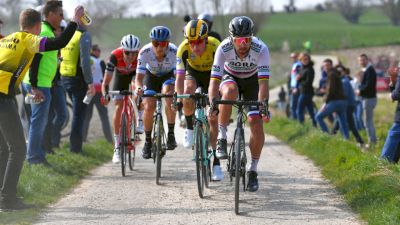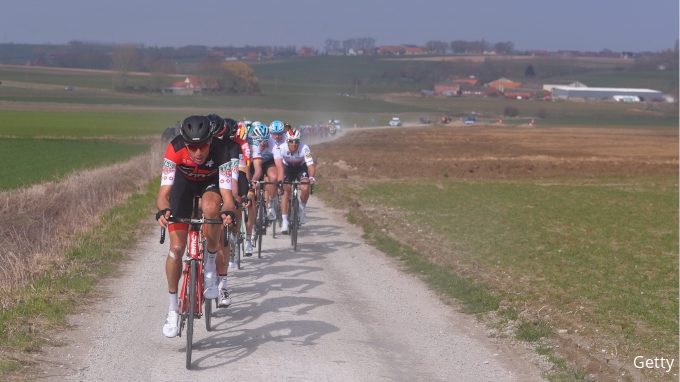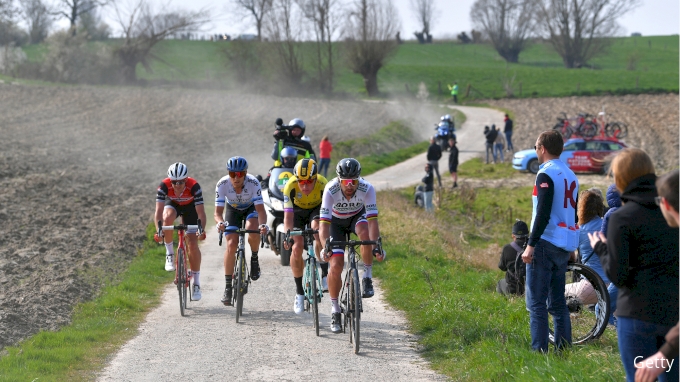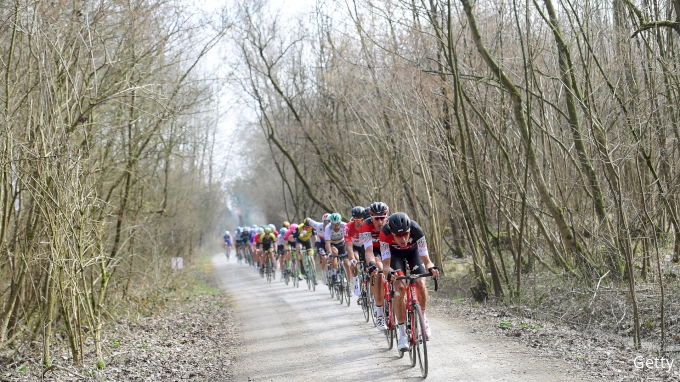Gravel Plugstreets Bring History Lessons To Gent-Wevelgem
Gravel Plugstreets Bring History Lessons To Gent-Wevelgem
Much like the great stone memorials and sprawling graveyards along the route of Gent-Wevelgem, the three plugstreets serve as moving monuments.

Added in 2017, the narrow and twisting gravel tracks known as "plugstreets" have become defining features of Gent-Wevelgem.
Join PRO to watch the 2021 Gent-Wevelgem live and on demand on FloBikes in the U.S., Canada and Australia!
Gent-Wevelgem is a race that serves both as a celebratory springtime Belgian classic and as a sobering reminder of past atrocities. As the race traverses the Flanders Fields, numerous memorials line the roads and hillsides of the region, commemorating the hundreds of thousands of Allied Troops who lost their lives on the same fields a century ago.
Coined by British soldiers, "plugstreet" is a nickname derived from the nearby village of Ploegsteert. In 2017, organizers of Gent-Wevelgem introduced three unpaved sectors and borrowed the British term when naming them.
Much like the great stone memorials and sprawling graveyards along the route of Gent-Wevelgem, the three plugstreets serve as moving monuments to specific historical moments from World War I.
Hill 63
The Hill 63 Plugstreet is named for its altitude, 63 meters above sea level. Allied troops used Hill 63 as a vantage point to spot German troops in their trenches.
Hill 63 is the first of the three sectors and includes multiple narrow twists and bends. The loose sinuous road requires diligent bike handling.

Christmas Truce
On Christmas Eve in 1914, German and Allied troops put down their weapons across the Flanders Fields in a famous cease-fire. The Christmas Truce Plugstreet commemorates this event by taking the peloton past a field on which German and Allied troops met for a game of soccer that Christmas day.

The Catacombs
The Catacombs is the third and final Plugstreet, and takes riders through a forested section of the race.
The sector is named for the catacombs dug by Australian and New Zealand troops under Hill 63. Tunneling was both an offensive and defensive tactic in the Flanders Fields. The catacombs served as underground troop accommodations, while mining expertise were also employed to create a sprawling network of death-defying tunnels under enemy lines.
